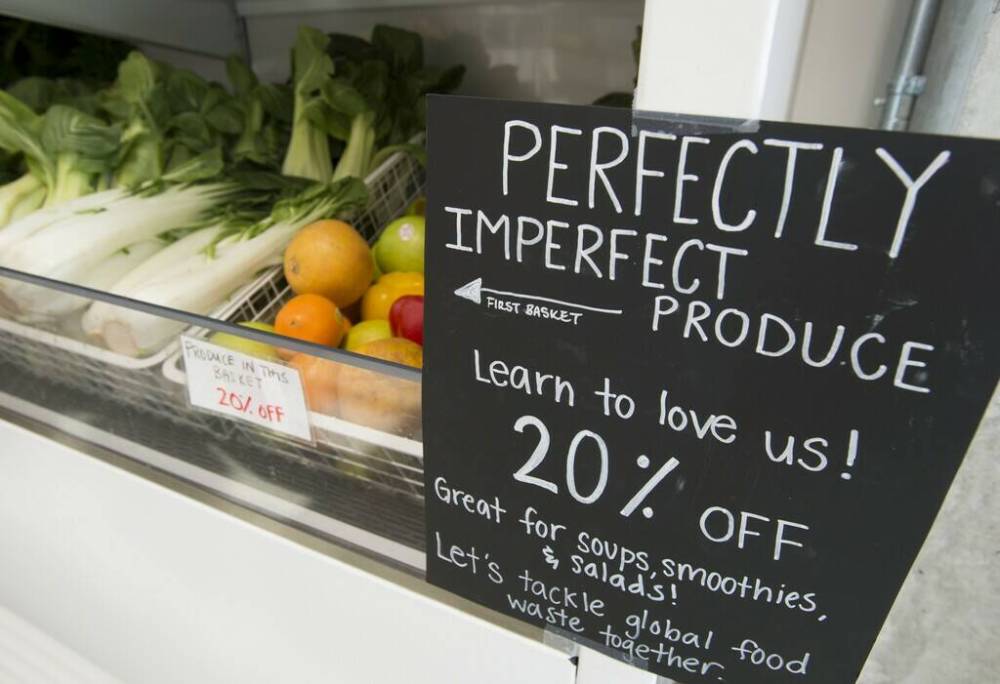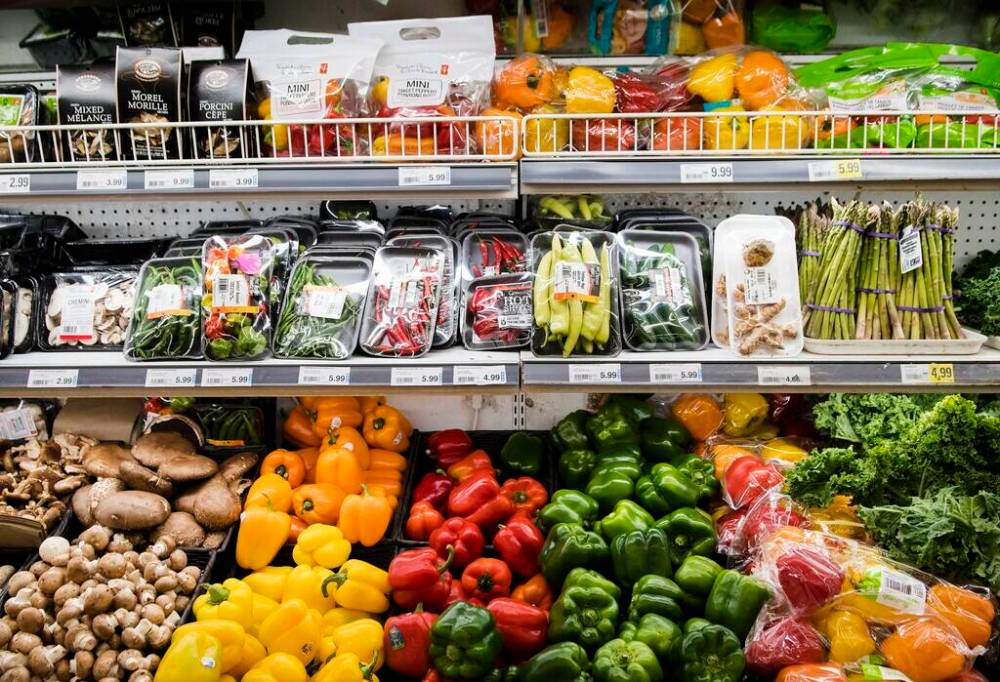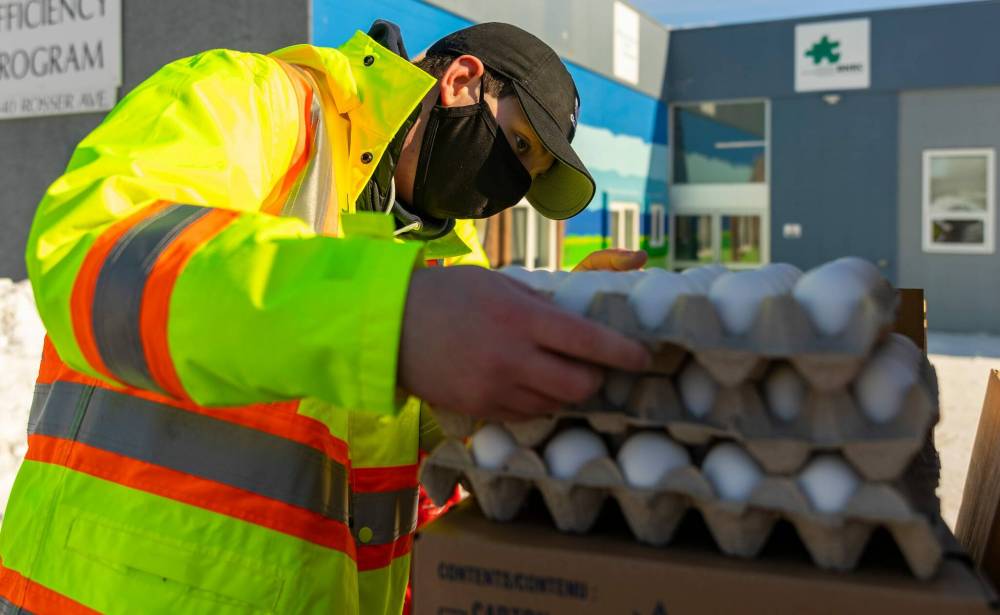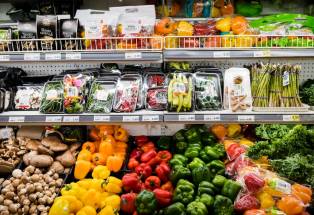Food waste is largely a solvable problem
Read this article for free:
or
Already have an account? Log in here »
To continue reading, please subscribe:
Monthly Digital Subscription
$19 $0 for the first 4 weeks*
- Enjoy unlimited reading on winnipegfreepress.com
- Read the E-Edition, our digital replica newspaper
- Access News Break, our award-winning app
- Play interactive puzzles
*No charge for four weeks then billed as $19 plus GST every four weeks. Offer only available to new and qualified returning subscribers. Cancel any time.
Read unlimited articles for free today:
or
Already have an account? Log in here »
Hey there, time traveller!
This article was published 09/02/2022 (1049 days ago), so information in it may no longer be current.
From shortages of toilet paper to computer chips to cereal, the global supply chain has garnered a lot of attention over the last two years. The pandemic has made everyday consumers hyper-aware of the long, winding journey products take before arriving on store shelves, as well as how vulnerable the system is to disruption.
When it comes to food, the supply chain has long been broken.
In Canada, more than half of the country’s food supply ends up in landfills each year — an estimated 11 million tonnes of which is totally avoidable. Waste is happening at every level, and the magnitude is largely due to the size and complexity of our supply chain.

A 2019 study by Environment and Climate Change Canada traced the causes and scope of food loss through the chain from farm to table. At the producer level, roughly 13 per cent of fruits and vegetables are left unharvested or discarded. Crop failure is baked into the business of farming, but these losses are attributed to overproduction, cosmetic standards and the economic balancing act of market price versus harvesting cost.
An unknown amount of food is lost during transportation — because that data isn’t tracked — but the waste continues at the processing and packaging stage, where manufacturing byproducts are also created. Food products are then picked up by wholesalers, which create waste through poor storage and inventory management, and then shipped off to retailers.
After all that, an estimated 12 per cent of edible food gets thrown away by grocers, thanks to the rejection of produce that doesn’t meet aesthetic standards, oversupply and the misleading practice of “best before” dates — which aren’t the same as expiry dates.
After all that, an estimated 12 per cent of edible food gets thrown away by grocers, thanks to the rejection of produce that doesn’t meet aesthetic standards, oversupply and the misleading practice of “best before” dates– which aren’t the same as expiry dates.
Some supermarkets have attempted to curb this waste by marketing “ugly” produce to customers and partnering with food-rescue organizations that divert usable products to food banks.
While it’s up to industry and governments to address issues with the supply chain, consumers have the power to help reduce food waste because they create a significant amount of it. As much as 30 per cent of household garbage is organic matter. Considering how much grocery bills have increased during the pandemic, this represents a huge waste of money.
Nationally, nearly $50 billion worth of food thrown out each year is avoidable. That’s a loss for everyone along the supply chain.
Nationally, nearly $50 billion worth of food thrown out each year is avoidable. That’s a loss for everyone along the supply chain.
Wasted food isn’t just a financial burden, it’s also an environmental one. Decomposing organic matter creates a huge amount of methane, and landfills are overflowing with fruits, vegetables, meat and dairy products that could be effectively broken down and recycled back into the environment through composting.
While other jurisdictions have curbside composting programs, Winnipeg has been slow to get on board. The city is currently running a two-year food waste-collection pilot program; so far, response from participants has been overwhelmingly positive, with 58 per cent saying the program has encouraged them to reduce their organic garbage.

Awareness is a powerful tool. If consumers are aware of how much food they are throwing out, they might think twice about buying more than they need. Composting is an effective way to deal with the byproducts of a wasteful society, but it can also help stem household waste at the source.
Governments and grocers need to do more to educate the public on the issue of food waste and Winnipeg needs to get the ball rolling on a city-wide composting program. It’s a chicken-and-egg situation — both of which could be diverted from the landfill with the proper planning.








